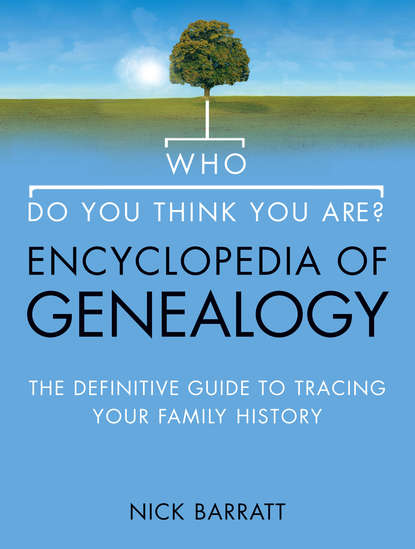По всем вопросам обращайтесь на: info@litportal.ru
(©) 2003-2024.
✖
Who Do You Think You Are? Encyclopedia of Genealogy: The definitive reference guide to tracing your family history
Настройки чтения
Размер шрифта
Высота строк
Поля
Another Act of Parliament, passed in 1597, is also important as it led to the birth of what are known as ‘Bishops’ Transcripts’. As well as compiling their own parish registers, local clergy were instructed to make annual copies of each register and send them to the bishop of the diocese in which they served. Therefore these are very useful duplicate copies of the original parish registers and can be used as an alternative if the original does not survive (or is partly or wholly illegible). However, Bishops’ Transcripts sometimes contained less detail than parish registers, or recorded slightly different information, so it is worthwhile examining both sources where possible.
There are other factors to consider when viewing the earliest registers. Other than the possibility that they may no longer be legible (ink may have faded or pages rotted), early registers were usually written in Latin. However, this shouldn’t cause too many problems. The nature of the information is fairly formulaic and is usually contained in a single sentence. Moreover, most archives have Latin dictionaries that enable you to translate words such as calendar months into English, as well as Latin versions of English names.
Another point to bear in mind is that the modern Gregorian calendar was adopted in the mid-eighteenth century instead of the old Julian calendar. Until 1752 the New Year did not begin on 1 January but 25 March. Hence, for example, all events occurring after 31 December 1675 to 24 March of the following year would belong to the year 1675, even though today we would consider them as belonging to 1676. Genealogists refer to this in their dating by using the formula ‘February 1675/6’.
Further, prior to 1813 there was no uniform method of registering events. Instead, individual clerks recorded information in their own unique ways and consequently the amount of information contained in parish registers varies considerably. Some parishes kept separate registers for baptisms, marriages and burials, whereas others prepared annual registers recording all these events together. The Rose Act was passed in 1813 and from this date all baptisms, marriages and burials were written in pre-printed books issued by the ‘King’s Printer’. These books ensured that the same details were recorded by each parish throughout the country. Often there would be more detail than had been recorded previously.
Lastly, do remember that parish registers were still kept after the introduction of civil registration in 1837 and, in theory, should exist to the present day. This is very useful when you are having problems locating events in the national GRO indexes as an equivalent record may be found in the local parish register instead, especially during the early days when civil registration was less popular or thought to be an unnecessary inconvenience.
Вы ознакомились с фрагментом книги.
Приобретайте полный текст книги у нашего партнера:
Приобретайте полный текст книги у нашего партнера:





